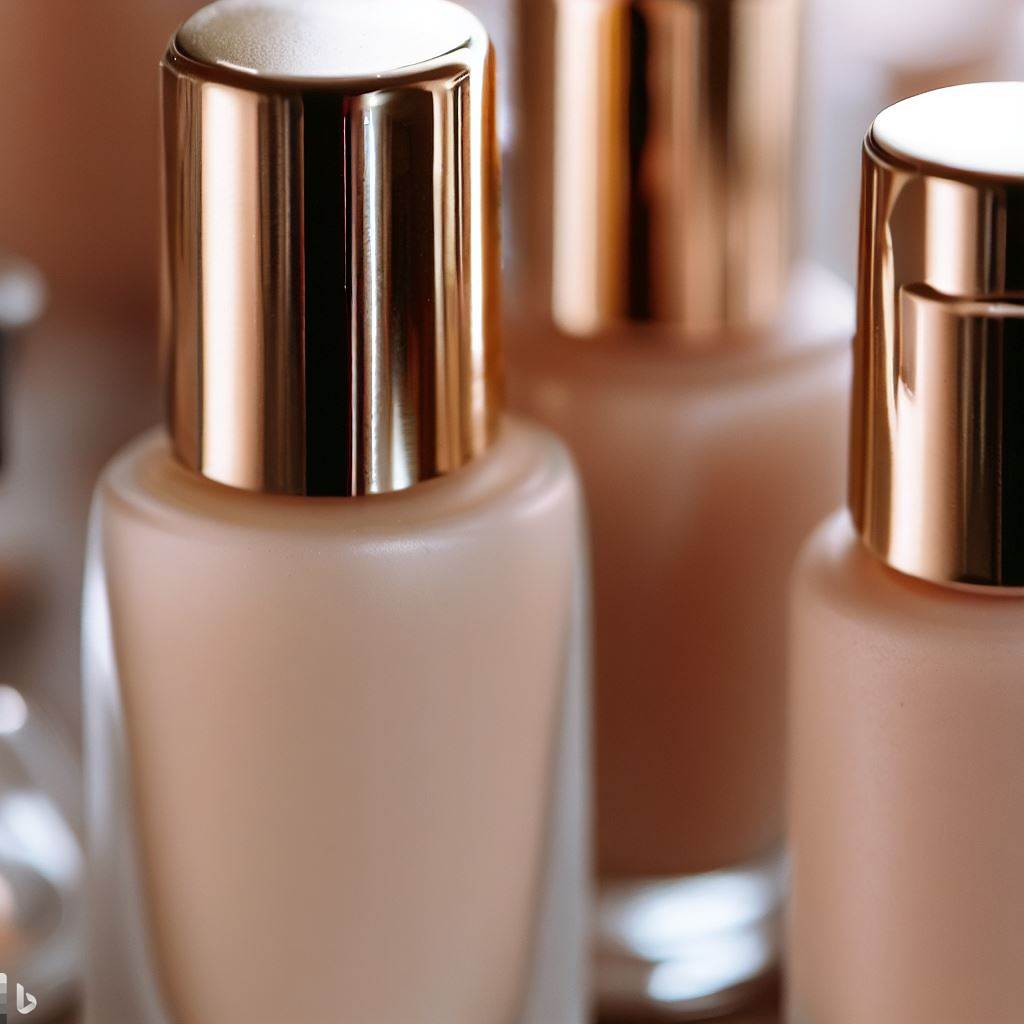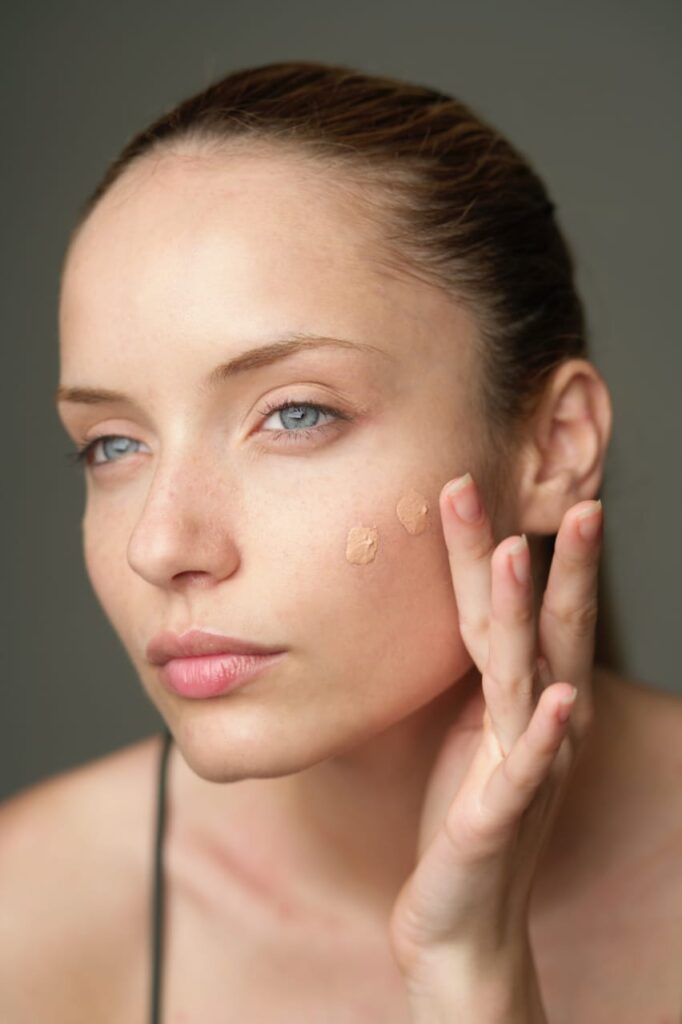H2: Introduction
Brief on the challenges of achieving a flawless foundation:
A flawless foundation is often seen as the holy grail of makeup application. However, achieving this look is not without its challenges. From the natural variance in skin types and tones to the overwhelming variety of products available, there are many factors that can impede that silky-smooth finish. Moreover, environmental elements such as humidity, temperature, and even our own daily habits can contribute to the foundation looking less than perfect.
Importance of understanding foundation application techniques:
For many, makeup application is an art. And just like any art form, understanding the techniques is key. The correct foundation application methods can transform the makeup from appearing cakey and patchy to creating a seamless, skin-like finish. By mastering these techniques and using the proven tips to fix cakey foundation, one can elevate their makeup game, achieving a perfect makeup look every time.
Why Foundation Becomes Cakey: The Underlying Issues
Factors causing cakey foundation (skin types, product selection, application tools):
Foundation can become cakey due to a myriad of reasons:
- Skin Types: Oily skin can break down the foundation, making it patchy. On the other hand, dry skin can cause the foundation to cling to patches, appearing cakey.
- Product Selection: Not all foundations are made equal. Some may be too heavy for certain skin types or climates, while others might not offer enough coverage, causing over-application. It’s crucial to find a formula that suits one’s specific needs.
- Application Tools: The tools used can significantly impact the foundation’s finish. A dense brush might offer full coverage but can also lead to a cakey appearance if not used correctly. Similarly, a damp makeup sponge can provide a dewy finish, but if over-saturated, it can dilute the foundation, making it patchy.
The role of skin prep in makeup application:
Prepping the skin is often the unsung hero in achieving a perfect makeup look. Starting with a clean canvas is essential. Exfoliation removes dead skin cells that can make foundation appear uneven. Hydration, through a good moisturizer, ensures the skin is plump and ready for makeup application. Moreover, priming creates a smooth surface for the foundation to latch on to, filling in pores and fine lines. Proper skin preparation not only ensures longevity of the makeup but also aids in achieving that much-desired silky finish.
Proven Tips to Fix Cakey Foundation and Achieve a Perfect Makeup Look
Pre-Makeup Skin Preparation
Importance of exfoliation:
To achieve a seamless foundation application, starting with a smooth canvas is essential. Exfoliation helps in removing dead skin cells, which, if left unchecked, can cause the foundation to sit unevenly. Regular exfoliation ensures that your skin remains refreshed, making it easier for makeup to glide on, eliminating any cakey residue. This is one of the foundational tips in fixing cakey makeup looks.
Moisturizing: selecting the right product for your skin type:
Every skin type requires hydration. For oily skin, opting for a lightweight, oil-free moisturizer can prevent excess shine. Dry skin types should lean towards richer creams to combat flakiness. Properly moisturized skin creates a barrier that not only keeps the skin hydrated but also allows foundation to set flawlessly, preventing the dreaded cakey appearance.
Primer: the bridge between skincare and makeup:
Consider primers as a bridge that ensures a smooth transition from skincare to makeup application. Primers fill in the fine lines and enlarged pores, providing a smooth surface. They also help in prolonging the wear of your foundation. Opt for mattifying primers for oily skin and hydrating ones for dry skin. This step is pivotal in the journey from cakey to silky foundation.
Choosing the Right Foundation
How to select the best formula for your skin type:
The market is flooded with foundation types: liquid, cream, powder, stick, and more. Oily skin types might benefit from matte-finish foundations, while those with dry skin might prefer a hydrating or dewy finish formula. It’s essential to test and determine which formula doesn’t just sit on your skin but melds with it. Remember, the right foundation formula can make or break your final makeup look.
Importance of shade matching:
An incorrectly matched foundation shade can be a glaring mistake, making makeup appear artificial. The key is to test the foundation on your jawline in natural light. The right shade will seamlessly blend into your skin. For those with seasonal skin tone changes, having two foundation shades—one for summer and one for winter—might be beneficial.
Application Techniques for a Flawless Finish
Tools: sponge vs. brush vs. fingers:
Each tool offers a different finish:
- Sponge: Provides a blended, natural finish. Ensure it’s damp to prevent product wastage.
- Brush: Offers more coverage. Use in circular motions for a seamless look.
- Fingers: They warm up the foundation, helping it sink into the skin, but might not provide as even a coverage as tools.
The role of setting sprays and powders:
Setting your foundation is the final step to ensure longevity. Powders mattify and set foundation in place, ideal for oilier skin types. Sprays, on the other hand, provide a natural finish, melding all makeup layers together. They’re perfect for dry skin or those aiming for a dewy look. Proper setting prevents makeup from shifting, ensuring your foundation stays flawless all day.
Achieving a Perfect Makeup Look: Beyond the Foundation
Achieving a captivating makeup look goes beyond just the foundation. It encompasses the entire spectrum, from concealer to contour, ensuring every element plays its part harmoniously.
Perfecting the Concealer Game
Tips to avoid creasing and settling in fine lines:
Creasing is a common concern when it comes to concealer application, especially under the eyes. To combat this:
- Always start with a good eye cream or moisturizer to hydrate the area.
- Opt for a lightweight, long-wearing concealer.
- Set the concealer immediately with a translucent setting powder, using a soft brush.
- Avoid using excessive product. A little goes a long way!
Blend, don’t smudge: techniques for a seamless look:
A flawless concealer application can elevate your entire makeup look. The secret lies in the blending:
- Use a damp makeup sponge or a soft-bristle brush for blending.
- Tap the product gently rather than dragging it.
- Always blend the edges well to ensure the concealer merges seamlessly with the foundation, making it a key aspect of the proven tips to fix cakey foundation and achieve a perfect makeup look.
Adding Dimensions: Contouring and Highlighting
How to avoid overdoing and maintain a natural finish:
Contouring and highlighting are powerful tools to sculpt and illuminate the face, but moderation is crucial:
- Use a contour shade only 2-3 shades darker than your foundation.
- Build up the product slowly; start with less and add as needed.
- Blend meticulously to avoid harsh lines.
- For a natural glow, apply the highlighter to the high points of the face, like cheekbones and the bridge of the nose.
Product selections for different skin tones:
Choosing the right products for your skin tone can make a world of difference:
- Fair Skin: Opt for cool-toned contour shades and soft, pearly highlighters.
- Medium Skin: Go for warm, bronzy contours and golden-toned highlighters.
- Dark Skin: Choose deep, rich contours and highlighters with a warm, golden or bronze hue.
Final Thoughts: Maintaining Your Look Throughout the Day
Makeup, when freshly applied, can look impeccable, but the real challenge is ensuring it stays that way throughout the day.
Touch-up techniques without causing cakiness:
- Instead of adding more foundation or concealer for touch-ups, use blotting papers to absorb excess oil.
- If powder is needed, apply sparingly and ensure it’s finely milled to avoid a cakey appearance.
The role of makeup setting sprays and mists:
Setting sprays are the unsung heroes of makeup longevity:
- Choose a setting spray based on your desired finish – matte or dewy.
- Spritz it at arm’s length in an ‘X’ and ‘T’ motion to cover the entire face.
- For refreshing your makeup, facial mists can be used. They hydrate the skin and rejuvenate the makeup, ensuring you continue to achieve a perfect makeup look throughout the day.
Conclusion
- Recap of mastering foundation techniques:
Throughout this guide on “Proven Tips to Fix Cakey Foundation and Achieve a Perfect Makeup Look,” we’ve delved deep into the nuances of creating that flawless base. From understanding the importance of skin preparation to the art of selecting and applying the right foundation, each step is integral in moving from a cakey to a silky-smooth finish. The role of concealers, contours, highlighters, and setting products further accentuates the finesse of the overall look. It’s essential to remember that mastering foundation techniques is a combination of using the right products, tools, and application methods tailored to one’s unique skin type and needs. - Encourage readers to experiment and find what works best for them:
While guides and expert tips provide a roadmap, makeup, at its core, is a personal journey. Everyone’s skin is distinct, and what works wonders for one might not be as effective for another. Hence, it’s crucial to experiment, mix, match, and discover the techniques and products that resonate with you. Embrace the process of learning and unlearning. Sometimes, the most unexpected combinations or techniques can lead to makeup magic. So, armed with these proven tips, venture forth, explore, and find that perfect makeup look that truly represents you.




